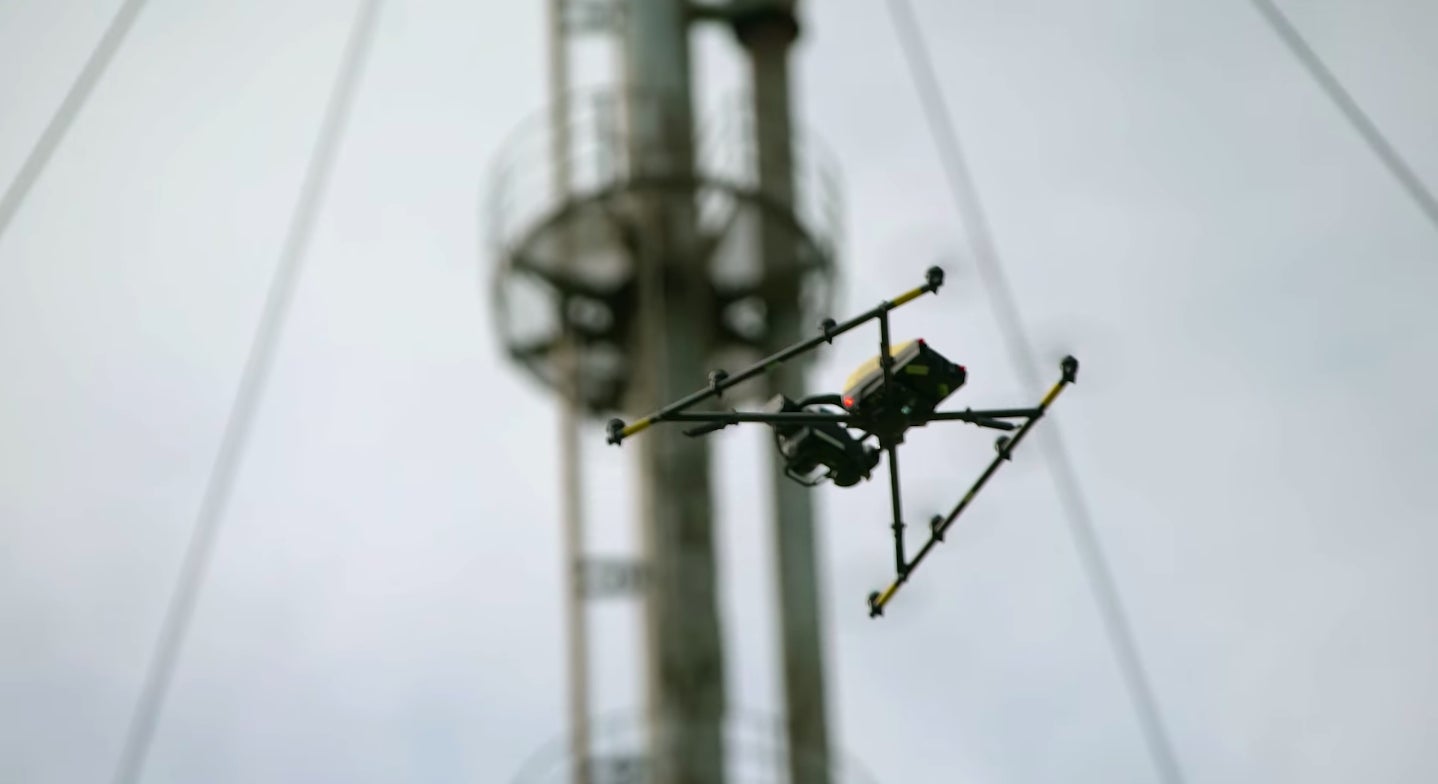Flying cameras have found a sense of belonging at oil and gas facilities
The oil and gas industry is poised to be transformed by a technology that flies through the air.


The oil and gas industry is poised to be transformed by a technology that flies through the air.
Unmanned aerial vehicles, better known as UAVs or drones, are now employed by some of the biggest oil and gas companies in the world. Maneuvering effortlessly around flare stacks, oil rigs, underdecks, and along miles of pipeline, these rugged, remote-operated hawks are saving businesses millions of dollars and making inspections safer than ever before.
UAVs are in the limelight, seizing the public imagination through spectacles like Intel’s mesmerizing mid-air choreographed drone light show at the 2018 Pyeonchang Opening Ceremony. But experts predict the commercial application of drones will generate the most explosive growth: Gartner forecasts a global revenue yield of $6.6 billion for the field by 2020. Goldman Sachs and others see the oil and gas industry as one of the top three or four sectors with the greatest potential for drone integration. Ultimately, employing UAVs in pipeline inspection is estimated to be worth $41 million globally, and as much as $1.1 billion for offshore rigs and refineries.
Monitoring for leaks or gas emissions, detecting spills, and ensuring that rigs and pipelines are safe and in compliance with regulations are among the most crucial operational tasks that oil and gas companies must carry out. Inspections can prove immensely costly, typically requiring facilities to shut down for days or weeks, losing millions of dollars.
These surveys can also come at great risk. Inspectors have to use ropes, harnesses, and rappelling equipment to reach hard-to-access areas on sites like offshore platforms, often in proximity to harmful chemicals. Because of this, businesses are under pressure to find a way to perform these inspections without putting lives in danger and adding staggering costs. Increasingly, industry leaders recognize UAVs as a solution to both quandaries.
Companies like Intel are creating drones that are an optimal solution for the needs of heavy-duty industries like oil and gas. Intel’s Falcon 8+ is as tough as it is smart. Able to brave external disturbances like powerful winds, weak GPS signals, and magnetic field interference thanks to a triple redundant autopilot, the device boasts the best power-to-size ratio on the market.
The Falcon 8+ can maintain flight even in the face of some mechanical failure or one of the eight motors malfunctioning. The carbon-fiber chassis and V-shaped body allow for a 180-degree view, with cameras which can snap real-time, time-stamped, georeferenced photos with accuracy down to the millimeter, as well as thermal images.
These features made the Falcon 8+ invaluable for the company Cyberhawk when inspecting flare stacks at a gas terminal in Saint Fergus, Scotland, where wind gusts can reach 40mph. Using Falcon 8+ drones, Cyberhawk was able to complete a survey in just over a day that would have taken three workers three days, and did not require shutting down the facility, saving up to $5 million a day.. “In the last 20 years that I’ve worked in the inspection industry, drones are the single biggest change we’ve seen to date,” says Chris Fleming, CEO of Cyberhawk.
Drones offer enormous preventative capabilities, but large, complex oil and gas facilities remain at the mercy of events like natural disasters. In the aftermath of recent hurricanes, when roads were blocked, UAVs helped perform search-and-rescue missions and provided industrial inspectors with the means to assess infrastructure like petroleum refineries from a safe distance.
The response to Hurricane Harvey in Houston, a national center of the oil and gas industry, provided a case study in how drones can aid the sector when disaster strikes. Following the storm, 10 oil refineries were shuttered, knocking out 16.6% of the total US refining capacity. The main conduit of natural gas from Texas to the Northeast was also taken offline. At several sites that sustained heavy flood damage, officials suspected that extremely flammable methane was leaking from gas pipelines. The Department of Energy deployed drones to assess these sites, which were able to determine that no pipeline leaks had occurred.
Whether scaling the heights of flare stacks to capture otherwise inaccessible images, or providing urgent eyes in the sky to industry and governmental officials in the event of dangerous storms, drones are proving indispensable to a business focused on safety and efficiency.
To find out more about commercial drones or to speak to a drone expert, visit www.intel.com/commercialdrones.
This article was produced on behalf of Intel by Quartz Creative and not by the Quartz editorial staff.